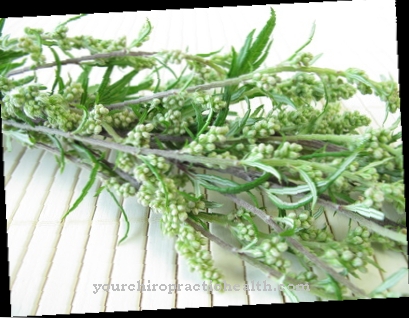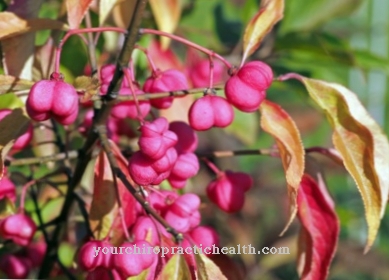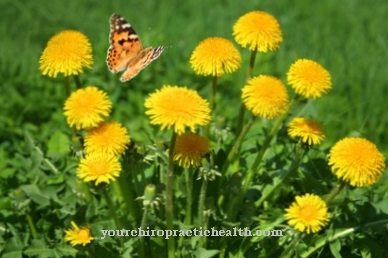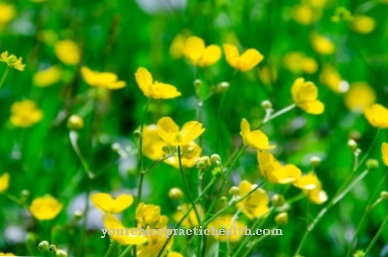Occurrence & cultivation of the spruce

The Norway spruce will also be Red spruce or Common spruce called. It is also incorrectly popularly referred to as the red fir, although it does not belong to the fir trees. It can be found in Europe and Asia and plays an important role in forestry. Depending on the location, the common spruce can live up to 600 years. However, in 2008 a spruce was found that is estimated to be over 9,000 years old.
In contrast, the rotation period in forestry is a maximum of 100 years. The common spruce is an evergreen tree. Its height is around 40 meters, although larger specimens have also been measured. Besides the Silver fir - botanically called Abies alba - the Norway spruce is the largest native tree in Europe. The diameter of the trunk can reach over a meter. Depending on the ventilation of the soil, different types of root systems are formed.
The top of the spruce tree forms a cone shape and the branches hang down on the underside, usually bent down. In the upper part of the trunk, however, the branches are upright. Due to the large area in which spruce occurs, different types of spruce have evolved. These differ from each other due to the different conditions. Depending on the location and climate, varying types of branches and needles were formed. The bark of the Norway spruce is reddish-brown and finely scaly.
In mountainous areas, however, the bark takes on a grayish color. In addition, the needles of the common spruce are pointed and square. Their length is about one to two centimeters and they live on average five years old. Spruce flowers and buds between May and June. Often this is only the case after several years. In mountainous areas, two flowers can be up to seven years apart. The buds are cone-shaped and light brown.
Female spruce flowers are arranged in cones, which later become lignified and become the familiar dry cones. Exceptions to the distribution area of the spruce are the Iberian Peninsula and the British Isles. Often it occurs in Northern, Eastern and Central Europe. It can also be found in Russia, Scandinavia and Poland.
The spruce prefers a cool and rather humid climate, which is why it often feels more comfortable at higher altitudes. At lower altitudes, the Norway spruce can only be found because of plantings. The spruce has meanwhile been naturalized in North America.
Effect & application
The wood of the spruce is an essential timber in building construction. It is used for the production of boards, beams and planks. But it is also used in furniture construction. This also includes use for doors or carcasses. Old spruce trees are also used for musical instruments. In the production of brewer's pitch, the bark of the common spruce is used to make gerbera.
The needles for spruce needle oil are used in the perfume industry. In addition, the young shoot tips are used in the kitchen. Their taste is tart and sour, which is why they are used in vegetables or cream cheese preparations, for example. In the past, the spruce was also used as a Christmas tree. In the meantime it has been replaced by the blue spruce and the Nordmann fir.
Due to its ingredients, the common spruce is also used in herbal medicine. It contains turpentine oil, resin, tannins, vitamin C, picein and essential oils. Young shoots, the resin and the needles are therefore used as remedies. Depending on the processing, they are suitable for both internal and external use. The shoot tips can be processed into spruce needle tea.
Turpentine oil also has a number of medicinal properties, although it should be used with caution as it is irritating to the skin. In addition, the essential oil can be extracted and used just like turpentine oil. A tincture can be made from the pine needles. Mixed with juniper berries, it has a positive effect on various ailments. However, when using the spruce internally, the dose must be observed, as it can quickly lead to irritation of the kidneys.
Importance for health, treatment & prevention
Preparations with spruce needles or the shoots against colds are used. They work against bronchitis and coughs. They also help against whooping cough and asthma or catarrh of the upper respiratory tract. The tea can also be drunk for pneumonia. Honey can also be added to tea to enhance its taste and effectiveness. In addition, the tea can also be used when you are tired in spring, which is due to the high vitamin C content.
When used externally, oil and tincture help with sore muscles, gout and rheumatism. Due to the high irritability, however, the remedy should be used sparingly. Both of these also increase blood circulation and alleviate related discomfort. In addition, spruce preparations are effective against nervousness, neuralgia and insomnia.
Turpentine oil is worming and also promotes digestive juices. As a bath, it promotes the healing of wounds and makes breathing easier for respiratory diseases. In this area it is also suitable for inhalations.



.jpg)























